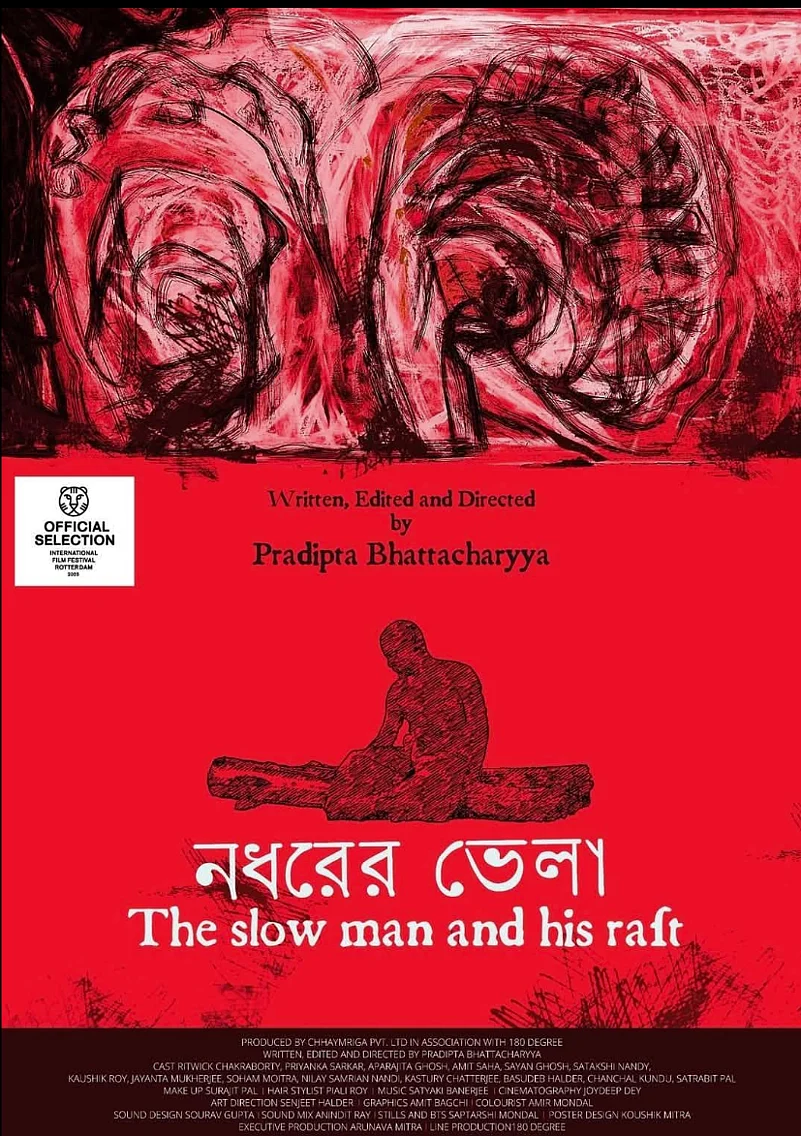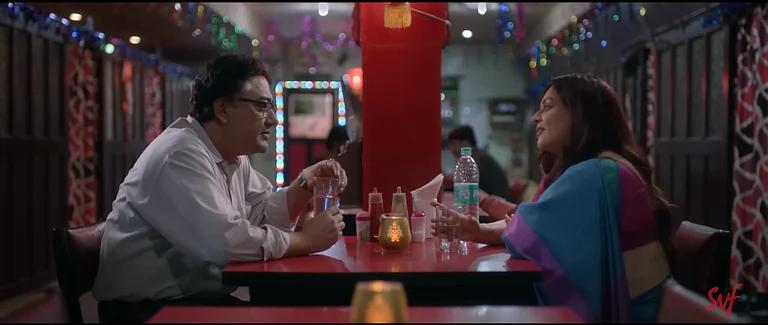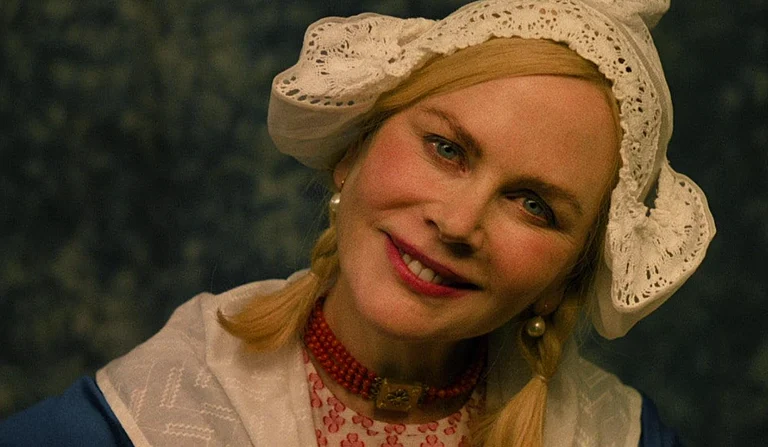At a time when the Bengali film industry is grappling with both commercial and artistic decline, the International Film Festival of Rotterdam spotlighted three Bengali feature films this year, including Pradipta Bhattacharyya라이브 바카라 third film, Nadharer Bhela (The Slowman and His Raft). Bhattacharyya entered Bangla cinema over a decade ago as an interventionist with his debut film, Bakita Byaktigoto (Rest Is Personal) (2013), which earned him the National Award for Best Debut. His unassuming, yet confident style of crafting unique cinematic worlds jolted the status quo of Bengali cinema. While Bengali cinema often feels saturated with repetitive detective stories and stale urban extramarital affairs, Bhattacharyya is perhaps the only filmmaker reclaiming the indigenous past, presenting the authentic innocence of Bengal's villages. His villages evoke a long-lost history, echoing pre-neoliberal austerity and a sense of parochial rootedness.
His latest film, titled The Slowman and His Raft in English, offers a quiet hint of the journey it unfolds. The film embraces an unsettling slowness that lingers and weighs on you, creating a necessary discomfort that prompts you to look inward. In today라이브 바카라 world, where life moves at a relentless pace, such moments of reflection have become a luxury. Smartphones, cheap internet, endless information, and fleeting 15-second social media reels have reshaped our perceptions of happiness and altered our thought processes. In this hyper-accelerated reality, slowing down is often seen as irrelevant—sometimes even abnormal.

In this film, the protagonist Nadhar (Amit Saha) moves at an extraordinarily slow pace — slower than a sloth — making him a stark deviation from what society considers normal. It라이브 바카라 hard to imagine such a character in today라이브 바카라 fast-paced world without experiencing the film firsthand. For me, watching Nadhar was a deeply visceral experience. Yet, as a woman, I was trying to understand Nadhar through the gender I carry in my consciousness. So, let me explore Nadhar through the perspectives of the two female characters in the film, each crafted with nuance by Bhattacharyya.
The film opens with a close-up of Nadhar라이브 바카라 mother, played by Kasturi Chatterjee. She is seen performing the gruelling tasks of everyday life—cleaning up Nadhar's mess and working at a pice hotel to scrape together a few bucks. In their courtyard, she also presents Nadhar as an incarnation of the local deity. This ritual, repeated daily, draws a few superstitious villagers who offer vegetables and rice in exchange. The act reflects her harsh, transactional approach to survival, as she struggles to make ends meet. Simultaneously, it serves as a metaphor for Nadhar라이브 바카라 extreme laziness being viewed as something divine. Despite Nadhar라이브 바카라 demure voice expressing his distaste for the charade, Nadhar라이브 바카라 mother scolds him, questioning how they would feed themselves if they didn’t maintain the pretense.

The second chapter of Nadhar라이브 바카라 life and the film begins when he joins the circus company that has arrived in the village. This circus, named The Great Bengal Circus, offers a variety of entertainments—from acrobatics and cheap dances to folk opera and even prostitution. The circus also brings with it a host of new characters. Among the men are the exploitative, and unabashedly corrupt circus owner Haradhan (Ritwick Chakraborty); his helpless, submissive man Friday, Bhalu (Niloy Samiran Nandi); and the manipulative performer Rahman (Sayan Ghosh). The women include folk actors like Shyama (Priyanka Sarkar); pop dancers like Rupa (Shatakshi Nandi); and the silent, passive figure of Haradhan라이브 바카라 wife (Aparajita Ghosh).
Shyama portrays the legendary lover Behula in the traditional Manasa Pala. However, the melancholic play struggles to attract an audience. Instead, people prefer watching Rupa dance seductively to Rahman라이브 바카라 peppy songs. Shyama finds herself increasingly irrelevant, as her sincere pursuit of acting is overshadowed by the demand for more titillating entertainment. Both Shyama and Rupa are also wanted for prostitution, as well as for satisfying Haradhan라이브 바카라 sexual whims. In a desperate bid to revitalise the show, Haradhan concocts a new act, pairing the misfit Nadhar with the overlooked Shyama. She is coerced into dancing provocatively like Rupa, while Nadhar is challenged to reach her within ten minutes. If he fails, the audience is invited to pelt him with eggs and tomatoes. This act becomes a spectacle of sadistic pleasure, where the crowd revels in its cruelty, signifying the world where violence is normalised.

Bhattacharyya manages to weave a thread of magic and hope into this ruthless atmosphere. Amid the desensitised harshness of the circus, Nadhar gazes at Shyama playing the role of Behula with amazement. His innocent awe touches Shyama, sparking a quiet affection between them. In Nadhar's gaze lies an ethereal love, a primal and instinctive refuge for tenderness. Perhaps it is this very love that inspires Bhattacharyya라이브 바카라 cinematic quest, beginning with his first film, Bakita Byaktigoto (Rest Is Personal), continuing through Rajlokkhi o Shrikanta (Rajlokkhi and Shrikanta) (2019), and now culminating in this film, where he sets adrift the legendary love of Behula—a tale believed to embody eternal love, deeply rooted in the Bengali collective psyche.
Every Bhattacharyya film echoes stories of timeless love—ideals that hint at a classical grace. The film's truthfulness is compellingly upheld by the cast. Celebrated actor Ritwick Chakraborty is utterly convincing in his uncouth, villainous role, while Priyanka Sarkar shines as Shyama, proving she deserves more challenging roles such as this. Both Satakshi Nandi's uninhibited portrayal of Rupa and Sayan Ghosh's effortless performance as Rahman deserve praise. In a small, silent role as Haradhan라이브 바카라 wife, Aparajita Ghosh dazzles. Amit Saha's portrayal of Nadhar is remarkable—embodying a metaphor with such ease is no small feat!
The film's deep connection to its roots is also evident in Satyaki Banerjee's music. Banerjee's songs—which he both wrote and performed—carry a blend of pathos and sardonic wit, perfectly complementing the narrative. Joydeep Dey라이브 바카라 cinematography aligns seamlessly with the film's rustic mood. Nadhar and his mother라이브 바카라 chapter unfolds in a muted village hut, set against a cool colour palette. In stark contrast, the circus arena bursts with vivid hues, where yellow and red dominate, heightening the sense of spectacle and drama.
In a conversation, Bhattacharyya revealed that he conceived this story almost ten years ago. Hailing from a small suburban town, he often found Kolkata too fast-paced for his tranquil mind. This contrast inspired the character of Nadhar, whose slowness becomes the epitome of silent subversion in a world where exhilaration is celebrated as normal. Nadhar represents an idea that is intrinsically antagonistic to the contemporary world. Bhattacharya believes that even in this age of fleeting affairs, sublime love endures at the core of people라이브 바카라 conscience across cultures, keeping the world functional. This optimism flows through his work, making the experience of watching Nadharer Bhela a journey into the centre of the self—a self that has been evicted long ago from its native origin.
Debarati Gupta is a filmmaker, columnist & Guest Lecturer, University of Calcutta
















